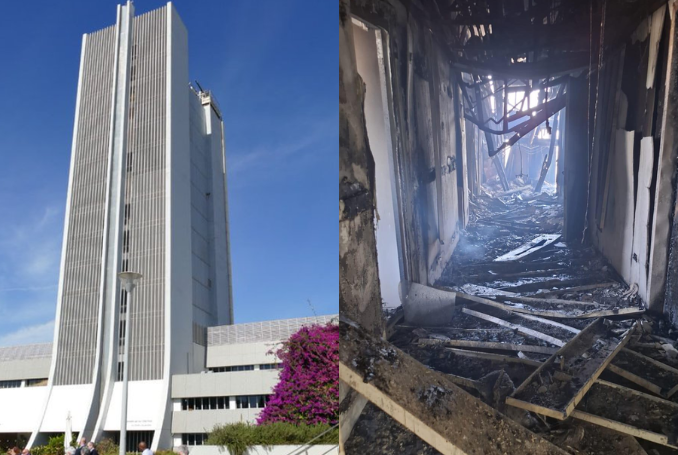
US researchers shared satellite data showing Iranian missiles penetrated Israeli airspace and struck sensitive infrastructure.
According to a report by The Telegraph, six Iranian missiles struck five separate Israeli military installations during the recent 12-day war, based on satellite radar data that has not been released publicly due to strict Israeli military censorship.
The British newspaper revealed that although the Iranian strikes targeted major Israeli military sites—including an air base, an intelligence center, and a logistics hub—Israeli authorities did not acknowledge the attacks, and domestic reporting remains restricted under military gag orders.
“The new data were shared with The Telegraph by US academics at Oregon State University, who specialize in using satellite radar data to detect bomb damage in war zones,” the report said.
The report noted 36 Iranian strikes that bypassed Israel’s air defense systems, damaging not only military targets but also civilian and industrial infrastructure.
Iran Reveals Only 5% of Defensive Power Used in Response to Israeli Aggression
Among the affected sites were oil and electrical installations, the Weizmann Institute—one of Israel’s leading research institutions—and the Soroka University Medical Center. Additionally, seven densely populated areas were struck, displacing more than 15,000 residents.
One strike triggered large fires in the city of Haifa, according to images circulating on social media.
Despite the scale of damage, Israeli officials reported only 28 fatalities nationwide.
According to The Telegraph, the proportion of missiles “that got through grew steadily in the first eight days of the 12-day war.” This was likely due to a combination of Israel conserving its interceptor missile supply, enhanced Iranian launch tactics, and the use of more advanced missiles.
The Iran Attack: A War for the Future of the Middle East and Palestine
Israel’s multi-tiered air defense network—including American-supplied THAAD systems and naval-based interceptors—was activated during the conflict. Nevertheless, Channel 13 journalist Raviv Drucker noted that many Iranian strikes on strategic Israeli locations remain underreported.
“People don’t realize how precise the Iranians were and how much damage they caused in many places,” he said.
Corey Sher, a researcher at Oregon State University, stated that his team is preparing a more comprehensive damage assessment for both Israel and Iran. The findings are expected to be published within two weeks.
According to the researcher, the primary Iranian tactic was launching drones and missiles in tandem to overwhelm and confuse defense systems.
War on Iran Backfires: Losses all around for Israel and Trump
Iran has widely publicized the footage of its missiles penetrating Israeli defenses.
Major General Ali Fazli, deputy commander of the Revolutionary Guards, declared, “We are in the best defensive position in the 47-year history of the Islamic Revolution – never before have we been at such a level in terms of military readiness, operational cohesion, and fighter morale”.
Despite Israeli strikes on Iran’s military leadership and nuclear facilities, much of Iran’s ballistic missile arsenal remains intact.
(PC, AJA)
(Except for the headline, this story has not been edited by PostX News and is published from a syndicated feed.)

